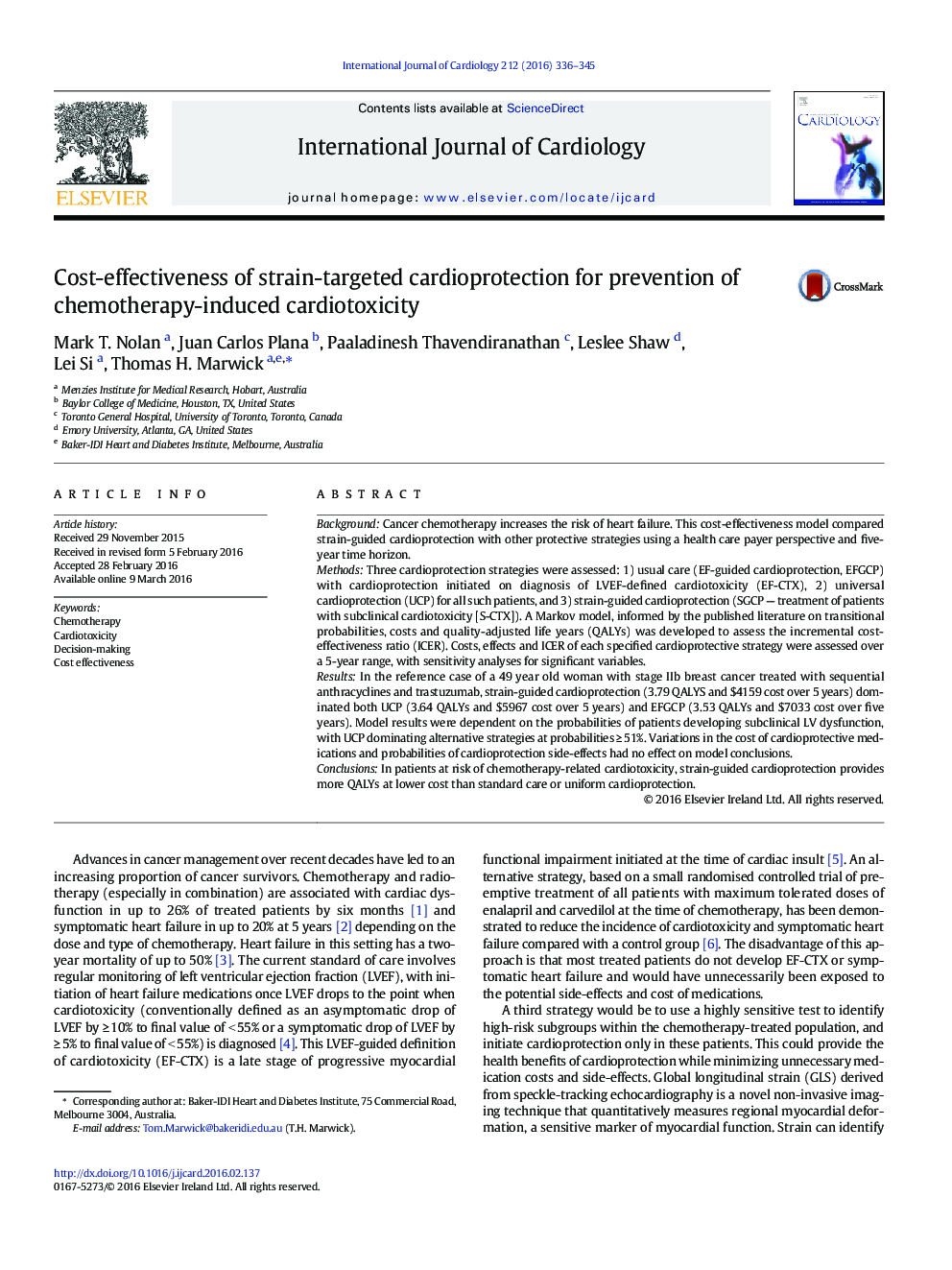| Article ID | Journal | Published Year | Pages | File Type |
|---|---|---|---|---|
| 5964395 | International Journal of Cardiology | 2016 | 10 Pages |
BackgroundCancer chemotherapy increases the risk of heart failure. This cost-effectiveness model compared strain-guided cardioprotection with other protective strategies using a health care payer perspective and five-year time horizon.MethodsThree cardioprotection strategies were assessed: 1) usual care (EF-guided cardioprotection, EFGCP) with cardioprotection initiated on diagnosis of LVEF-defined cardiotoxicity (EF-CTX), 2) universal cardioprotection (UCP) for all such patients, and 3) strain-guided cardioprotection (SGCP - treatment of patients with subclinical cardiotoxicity [S-CTX]). A Markov model, informed by the published literature on transitional probabilities, costs and quality-adjusted life years (QALYs) was developed to assess the incremental cost-effectiveness ratio (ICER). Costs, effects and ICER of each specified cardioprotective strategy were assessed over a 5-year range, with sensitivity analyses for significant variables.ResultsIn the reference case of a 49 year old woman with stage IIb breast cancer treated with sequential anthracyclines and trastuzumab, strain-guided cardioprotection (3.79 QALYS and $4159 cost over 5 years) dominated both UCP (3.64 QALYs and $5967 cost over 5 years) and EFGCP (3.53 QALYs and $7033 cost over five years). Model results were dependent on the probabilities of patients developing subclinical LV dysfunction, with UCP dominating alternative strategies at probabilities â¥Â 51%. Variations in the cost of cardioprotective medications and probabilities of cardioprotection side-effects had no effect on model conclusions.ConclusionsIn patients at risk of chemotherapy-related cardiotoxicity, strain-guided cardioprotection provides more QALYs at lower cost than standard care or uniform cardioprotection.
